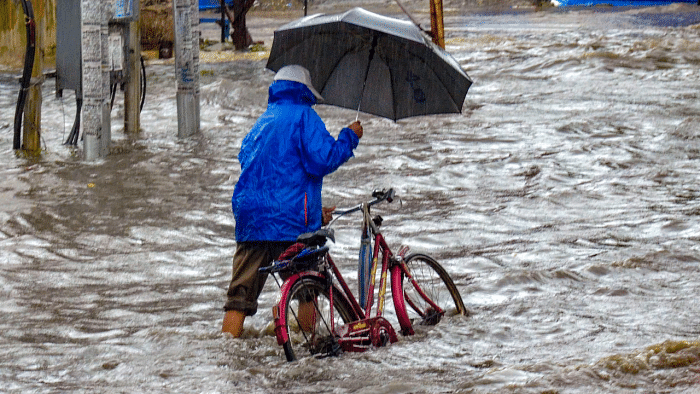
India has recorded extreme weather events on 242 of the 273 days between January 1 and September 30, this year - more than 88 per cent of the days in nine months – the Centre for Science and Environment on Tuesday said in a new report that turns the spotlight back on India’s climate vulnerabilities ahead of a major UN climate summit.
In the last nine months, a disaster struck some parts of India almost every day. They range from heat and cold waves, cyclones, lightning to heavy rains, floods and landslides.
Compiling publicly available information, the CSE report said that these disasters claimed 2,755 lives, affected 1.8 million hectares of crop area, destroyed over 416,667 houses and killed close to 70,000 livestock. “What the country has witnessed so far in 2022 is the new abnormal in a warming world. There is a clear spike in frequency and intensity of extreme events that we are seeing,” said CSE director general Sunita Narain.
The CSE report comes ahead of the United Nations Framework Convention on Climate Change’s annual summit (COP27) that will be held at Sharm el Sheikh between November 6-18. The nations will take stock of the progress made since the Glasgow summit and what needs to be done to ensure that global warming doesn't breach the guard rail of two degrees Celsius.
The UN Intergovernmental Panel on Climate Change defines extreme weather events as those that are “rare at a particular place and time of year”.
While India does not have an official definition, the India Meteorological Department in its annual “Statement of Climate of India” reports, classifies lightning and thunderstorm, heavy to very and extremely heavy rainfall, landslide and floods, cold wave, heat waves, cyclones, snowfall, dust and sandstorms, squalls, hailstorms and gales as extreme weather events.
Compiling information available at IMD, the Disaster Management Division of the Union Ministry of Home Affairs and in the media, the CSE report showed that with a severe natural calamity on every second day, Madhya Pradesh saw the highest number of days with extreme weather events, but Himachal Pradesh saw the highest number of human fatalities -- 359 deaths.
Madhya Pradesh and Assam witnessed 301 human deaths each. Assam also reported the highest number of damaged houses and animal deaths. Karnataka, which experienced an extreme weather event in 82 days, accounted for more than 50 per cent of the crop area affected in the country.
In 2022, India recorded its seventh wettest January since 1901. This March was also the warmest ever and the third driest in 121 years. It was also the country’s third warmest April, 11th warmest August and 8th warmest September since 1901.
Eastern and northeastern India saw its warmest and driest July in 121 years. The region also recorded its second-warmest August and fourth-warmest September in 2022.
Every day of the three months of the monsoon – from June to August – indicates heavy to very heavy and extremely heavy rainfall in some parts of the country. This is why the flood devastation has not spared any region.
Heat waves claimed 45 lives, but what is not captured in the official data is the impact of the prolonged high temperatures on people’s well-being in north India – from farmers to construction workers -- and how they coped with the intense and searing heat.
“This is what is the watermark of climate change. It is not about a single event but about the increased frequency of the events. Worse, it is now all coming together and is breaking the backs of the poorest who are worst impacted and are fast losing their capacities to cope with these repeated and frequent events,” said Narain.
The CSE team, however, agreed that there were gaps in the loss and damage assessment as the data was not comprehensive. There is no information on the loss and damage in connection to several extreme climate events as defined by the IMD.
